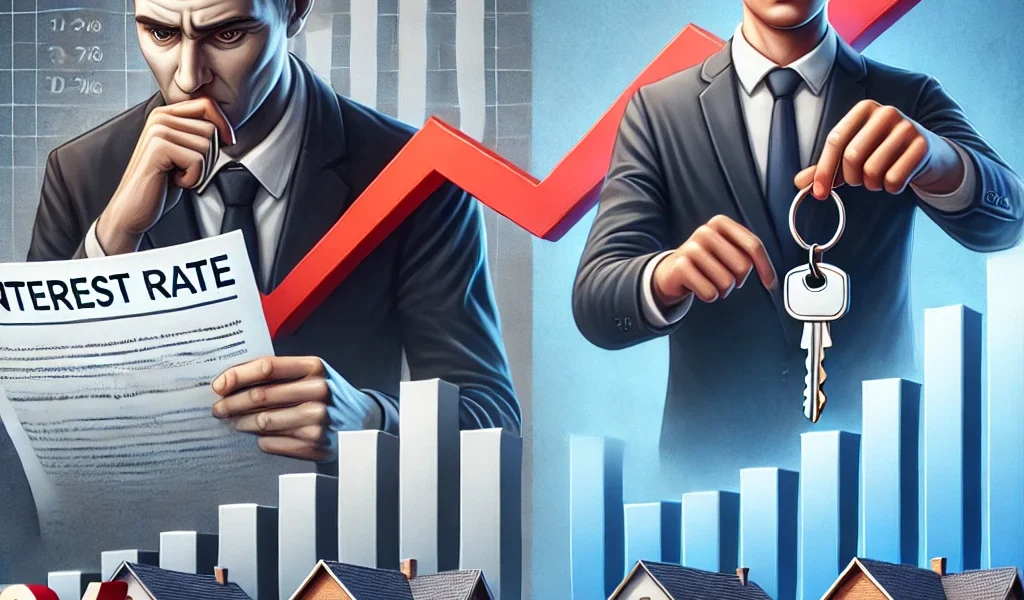Introduction
Interest rates play a crucial role in real estate investing. Whether you’re a homebuyer, landlord, or property investor, understanding how interest rates impact property values, mortgage costs, and overall profitability is essential for making informed decisions.
With interest rates fluctuating due to economic conditions, inflation, and Federal Reserve policies, investors must know:
✅ How rising or falling interest rates affect property demand and affordability
✅ Strategies to mitigate risks in high-interest environments
✅ How to capitalize on low-interest periods for maximum returns
In this DIY guide, we’ll break down the impact of interest rates and provide actionable investment strategies to help you navigate the ever-changing real estate market.
1. Understanding Interest Rates & Real Estate Investments
A. What Are Interest Rates?
Interest rates represent the cost of borrowing money. When banks or lenders offer mortgages, they charge an interest rate, which determines your monthly payments and the total loan cost.
💡 Key Terms to Know:
🔹 Fixed-Rate Mortgage: The interest rate remains the same throughout the loan term.
🔹 Adjustable-Rate Mortgage (ARM): Interest rates fluctuate based on market conditions.
🔹 Federal Reserve Rate: The rate set by the central bank, influencing all other interest rates.
B. How Interest Rates Affect Real Estate
✔️ High Interest Rates:
- Increase borrowing costs 📈
- Reduce affordability & demand 🏡
- Lower property values 📉
✔️ Low Interest Rates:
- Make borrowing cheaper 💰
- Increase demand for real estate 🚀
- Drive up property prices 📊
2. The Impact of Interest Rates on Different Real Estate Investment Strategies
A. Buying Investment Properties
When rates are low:
✅ Lower mortgage payments → Higher ROI
✅ More buyers in the market → Property values increase
When rates are high:
⚠️ Higher loan costs → Lower cash flow
⚠️ Fewer buyers → Slower appreciation
💡 Tip: Lock in fixed-rate mortgages in low-interest environments.
B. Rental Properties
When rates are low:
✅ More buyers → Fewer renters
✅ Increased property values → Higher equity growth
When rates are high:
✅ Fewer buyers → More demand for rentals
✅ Higher rents → Increased cash flow for landlords
💡 Tip: Focus on long-term rental demand when interest rates rise.
C. House Flipping
When rates are low:
✅ More buyers → Faster property sales
✅ Higher sale prices → Bigger profit margins
When rates are high:
⚠️ Fewer buyers → Longer holding times
⚠️ Increased financing costs → Lower profits
💡 Tip: Use cash purchases or short-term financing to avoid high-interest loans.
D. Commercial Real Estate
When rates are low:
✅ More businesses expand → Higher occupancy
✅ Increased property values → More investment opportunities
When rates are high:
⚠️ Higher borrowing costs → Reduced investor activity
⚠️ Slower commercial growth → Longer vacancies
💡 Tip: Invest in recession-proof sectors like healthcare, logistics, and multifamily housing.
3. How to Adapt Your Real Estate Strategy Based on Interest Rates
A. When Interest Rates Are Rising
✔️ Invest in Cash Flow Properties: Focus on high-yield rental properties to maintain profits.
✔️ Refinance Early: Lock in low rates before further increases.
✔️ Negotiate Seller Financing: Ask sellers for lower interest payment plans.
B. When Interest Rates Are Low
✔️ Buy & Hold for Appreciation: Property values rise in low-rate environments.
✔️ Leverage Low-Cost Loans: Take advantage of cheaper financing.
✔️ Expand Your Portfolio: Acquire more rental units before rates increase.
4. Real-Life Examples: Interest Rates in Action
📌 Case Study 1: The 2008 Housing Crisis
- Low interest rates led to excessive borrowing & inflated property values.
- The bubble burst, causing massive foreclosures & price drops.
- Lesson: Always evaluate long-term affordability, not just low rates.
📌 Case Study 2: Post-COVID Real Estate Boom (2020-2022)
- Record-low interest rates fueled a real estate buying frenzy.
- Property values skyrocketed as buyers rushed to secure low rates.
- Lesson: Buying in low-rate environments maximizes property appreciation.
📌 Case Study 3: Rising Rates in 2023-2025
- Interest rates climbed to control inflation, cooling down hot markets.
- Investors pivoted to cash flow rentals & creative financing strategies.
- Lesson: Adapt to market shifts by focusing on rental demand & affordability.
5. The Best Investment Strategies for 2025 & Beyond
🏡 For Homebuyers:
✅ Buy with a fixed-rate mortgage before further rate hikes.
✅ Consider seller-financed deals to get better terms.
🏢 For Real Estate Investors:
✅ Focus on rental properties (demand increases when rates rise).
✅ Invest in recession-resistant commercial assets like healthcare & logistics.
💰 For House Flippers:
✅ Avoid long-term loans; look for cash-only deals.
✅ Flip properties in affordable, high-demand areas.
📉 For Risk-Averse Investors:
✅ Consider Real Estate Investment Trusts (REITs) for passive income.
✅ Wait for interest rate cuts before expanding aggressively.
6. Final Thoughts: Smart Investing in Any Interest Rate Environment
Interest rates are a key driver of real estate profitability. Savvy investors know how to adapt their strategies to benefit from both high and low-rate environments.
✅ When rates are low – leverage cheap loans & invest for appreciation.
✅ When rates are high – focus on rental income & cash flow stability.
🚀 What’s Next? Ready to invest? Evaluate current rates, analyze market conditions, and choose the best strategy that aligns with your financial goals.




